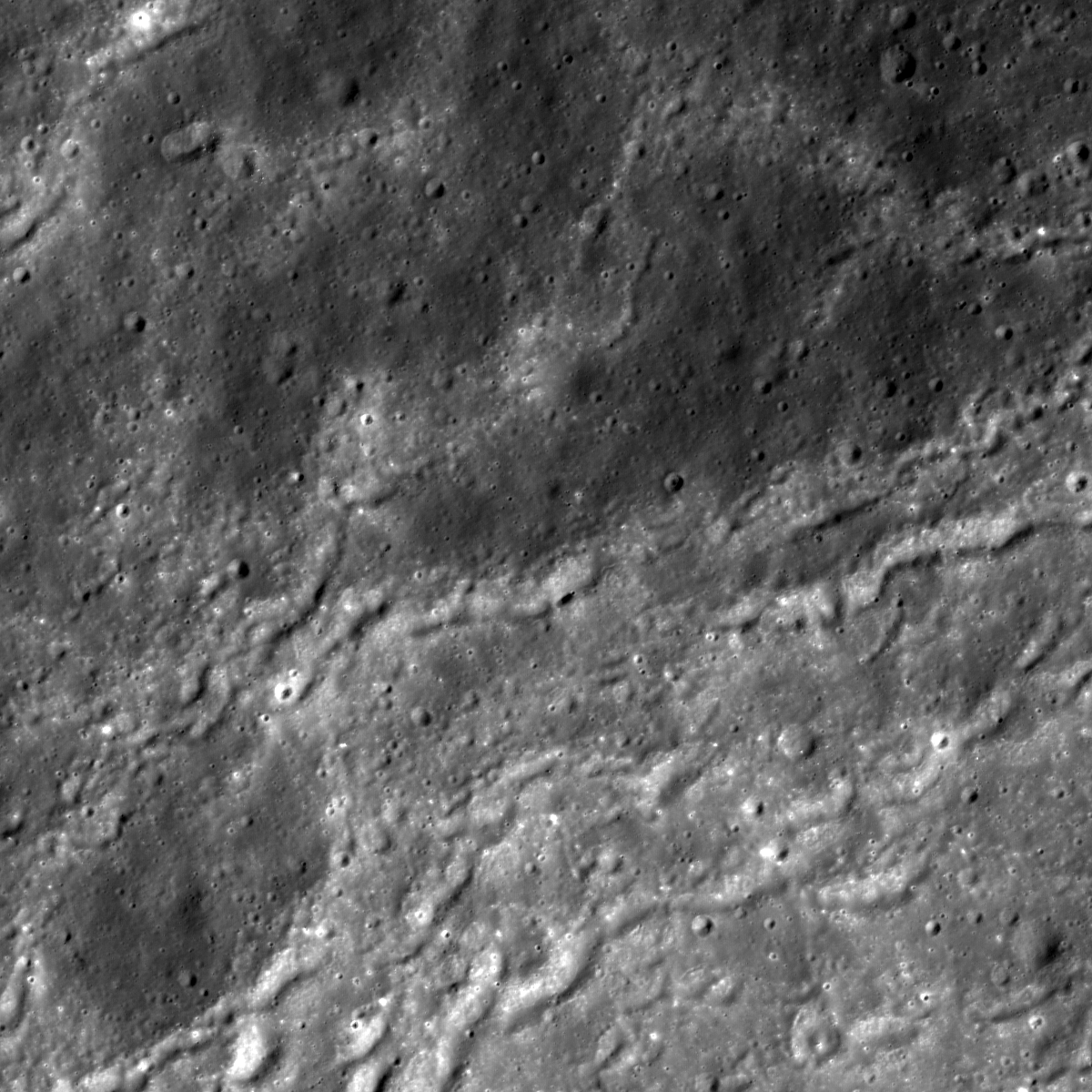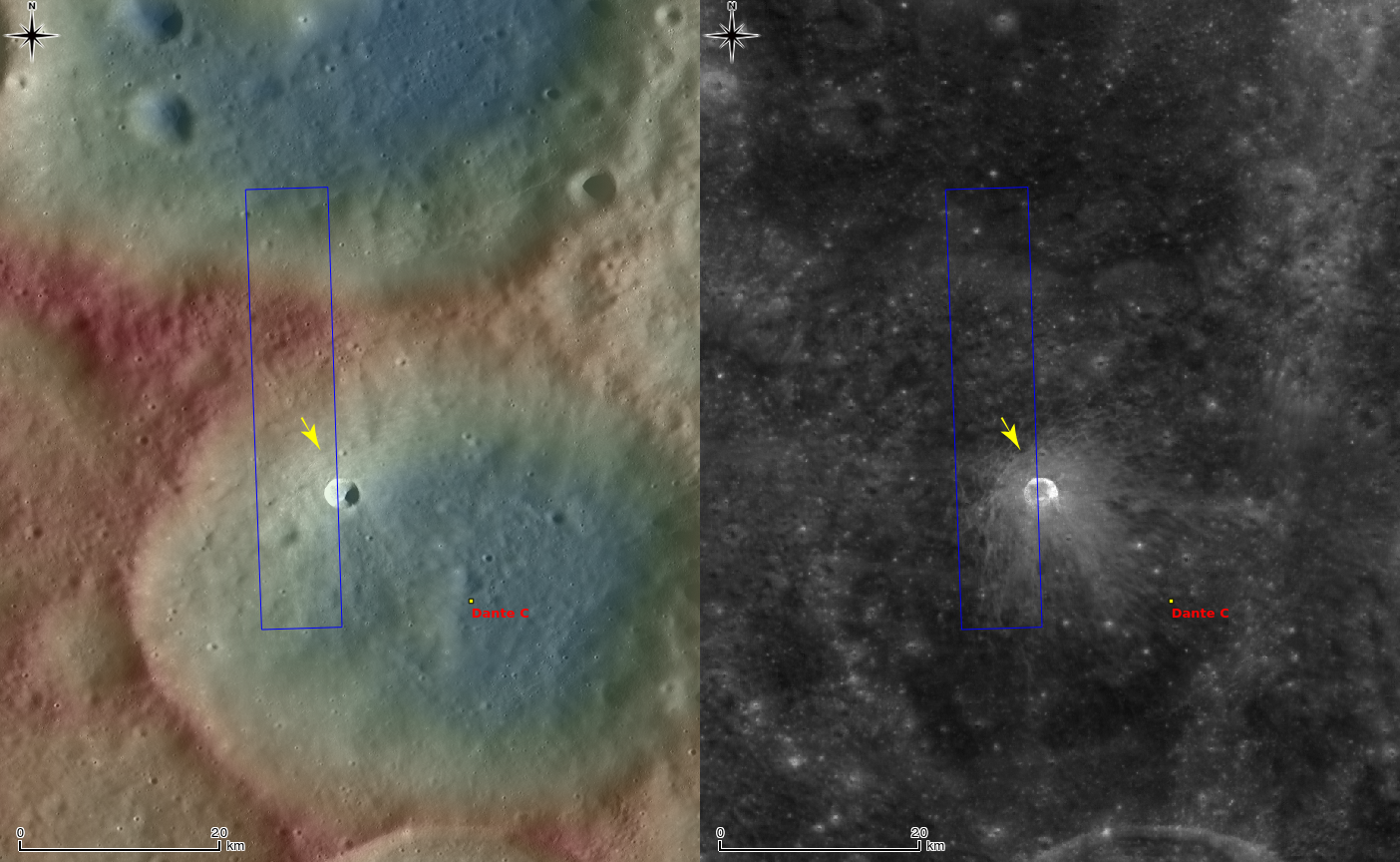
Dante C is a ~54 km diameter crater, located in the central farside highlands. In the northwestern portion of the crater floor, there is an unnamed crater (~3 km in diameter) with a spectacular diffuse asymmetric ejecta pattern (see next WAC no-shadow context view, right side).
The uphill side (upper-left) shows a distinctive wavy pattern of ridges and grooves (seen in the opening picture) within about 3 km of the rim. Probably due to the background slope (Dante C crater wall, downslope is to the lower-right), the ejecta hit the ground and stopped in a shorter distance than on the downhill side, leaving partially wrinkled edges in the ejecta deposits. The downhill side shows a smooth surface without the wavy pattern, implying that the thin layer of ejecta spread out homogeneously on the downslope. Also, the thickness of the ejecta itself might have been asymmetric due to the local slope. The uphill slope can interrupt ejecta's lateral motion, leaving unique ridges and grooves, another example of the range of crater forms found on the Moon.
Explore the asymmetric ejecta with clear wave patterns in full NAC frame and in LROC QuickMap!
Related posts:
Published by Hiroyuki Sato on 22 April 2014
